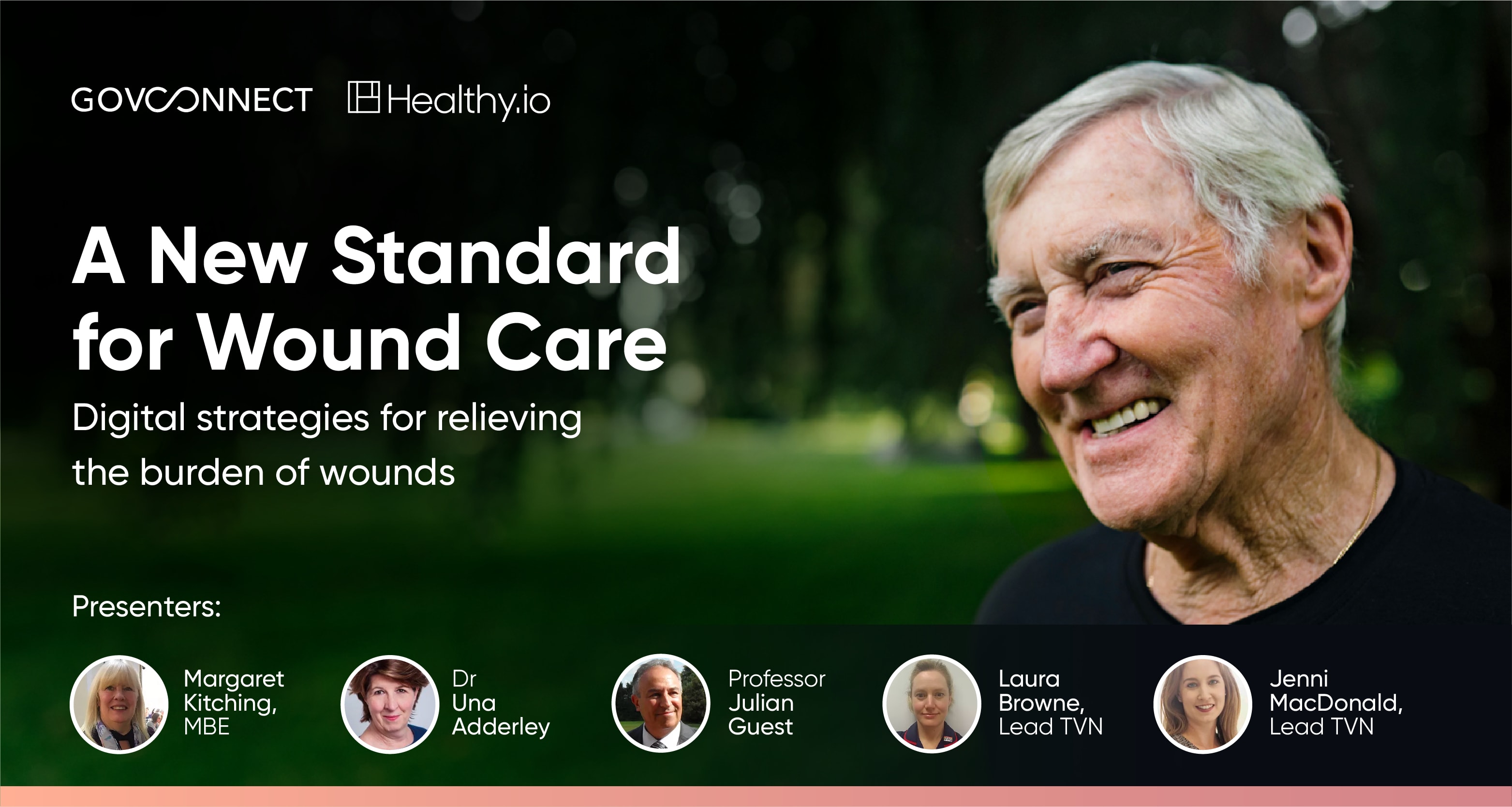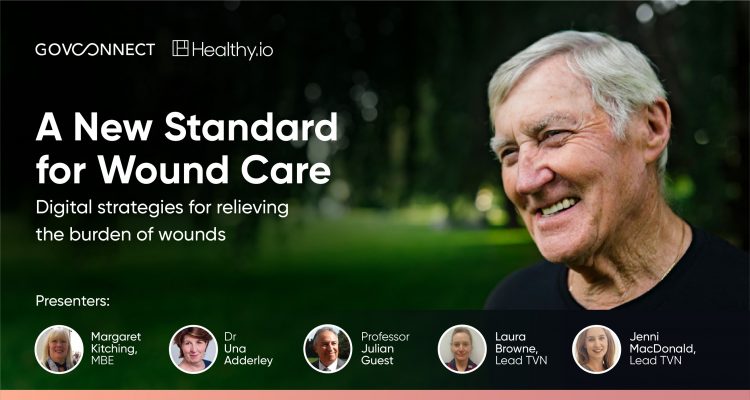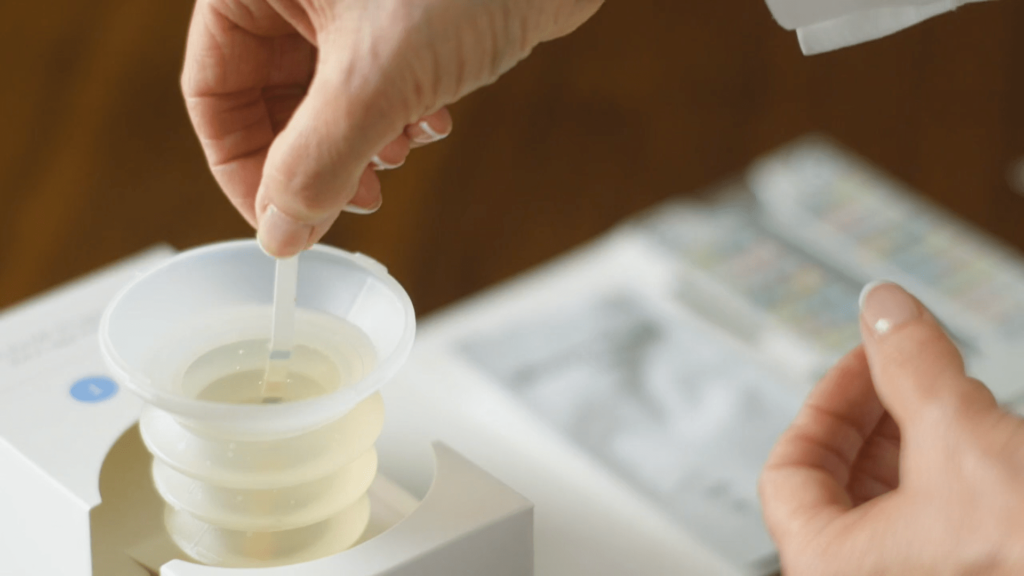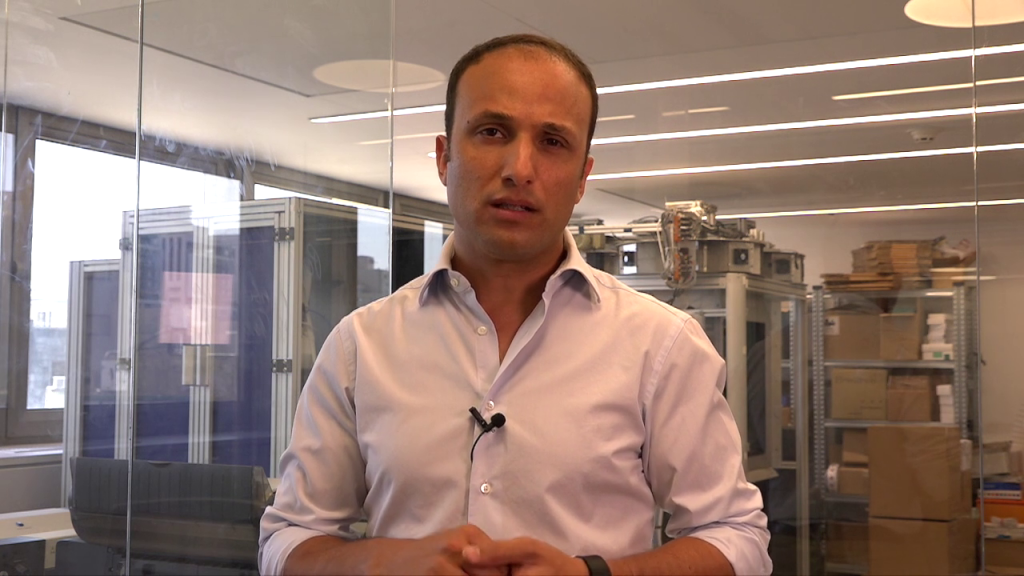Chronic wounds dominate the lives of almost four million people in the United Kingdom. The wound burden is also borne by their family and friends—and by the nurses, doctors and other caregivers who tend to them. Unfortunately, that burden is growing fast. A new report indicates a 71% increase in the prevalence of wounds managed by the NHS within a few short years, resulting in an annual cost of £8.3 billion. Despite clinicians’ hard work, those numbers are sure to increase without innovative change designed to expedite wound healing.
To explore the challenges facing wound patients and clinicians—and to map out digital solutions—Healthy.io partnered with NHS clinicians and Govconnect for a special webinar. The event was hosted by Margaret Kitching MBE, Chief Nurse (North) NHS England & Improvement, and featured Dr Una Adderley, National Wound Care Strategy Programme Director, AHSN Network, Professor Julian Guest, Principal at Catalyst Consultants, Laura Browne, Operational Lead Tissue Viability at Leicestershire Partnership NHS Trust, and Jenni MacDonald, Lead Nurse Tissue Viability at NHS Lothian.
Here are some key takeaways from the event:
The key to decreasing the burden of wounds: improved healing rates
Professor Julian Guest presented the findings from his newly updated report on the burden of wounds in the UK. The picture they present is bleak: a dramatic increase in the prevalence of wounds, accompanied by a major increase in costs. But Professor Guest was quick to point out the opportunities for improvement. Unhealed wounds made up only 30% of the wounds in the study dataset, but they accounted for 67% of the total cost. Since non-healing wounds are a disproportionate cost driver, a change to the healing rate will have a larger effect on resource use and costs than a change to any other parameter.
The effect of a single wound cannot be overestimated
Wounds have a staggering effect on the people that suffer from them—but also on their families, communities, and clinicians, because of the marked effect on each patient’s mental health, self-esteem and overall quality of life. Jenni MacDonald explained how wounds often cause extreme social isolation and anxiety, effectively depriving patients of their social lives, whether because they hinder people’s mobility or because of their odour. Of the 3.8 million wound patients in the UK, she said, “I would like you to take away that that’s 3.8 million patient stories, that’s 3.8 million individual physical and psychological burdens on patients, on families, and their carers.”
Embracing digitalisation to heal wounds
In her talk, Dr Una Adderley, the National Wound Care Strategy Programme Director, elaborated on the reasons behind the growing number of wounds: unwarranted variation in care, poor organisation, and an underpinning lack of the data and information required to inform quality treatment. For a brighter future, wound care must embrace digitalisation across the entire care pathway. In her vision, as set forth in the national strategy, wound data needs to be collected at the point of care by the clinician, preferably using a mobile device, and automatically processed and uploaded to a central system. “We believe that if we can do this, we should then be developing towards the delivery of evidence-based care, which is more likely to improve wound healing, reduce the burden of wounds and reduce the cost of caring for those wounds,” she said.
Digital solutions are already transforming wound care
Digitising wound care has real-world benefits that directly address the major challenges posed by wounds, according to Laura Browne from Leicestershire Partnership NHS Trust. She presented her team’s experience using Healthy.io’s digital wound management solution, which provides accurate wound measurement and tracking. The resulting information is stored in each patient’s record and easily shared across care teams, enhancing collaboration. The solution also provides early alerts of stagnating wounds that allow for rapid, informed changes to care plans.
According to Browne, the early interventions made possible by the solution have already had a real effect on healing rates. Additionally, surveys demonstrate high satisfaction from the solution on the part of the care team; 100% of the staff reported that the app prompted early detection of stagnating wounds, and rated their confidence with the solution at 10 out of 10. Patients also gave it high marks. Being able to visually track the improvement of a wound over time facilitates significant patient engagement, helping give them a sense of control over an often debilitating predicament. As a result, 100% of patients said it helped them engage in their wound care.
***
By adopting digital solutions, care teams across the UK are making real progress towards faster healing that will both transform their patients’ lives and reduce systemic burden. As the event’s host, Margaret Kitching MBE, said of the National Wound Care Strategy Programme, “digital innovation in this field is essential for the success of the programme. I can say it’s a key area that we will be focusing on.”
For more insights from the event, view the recording below:
For additional information, including questions and answers with the speakers, click here.






